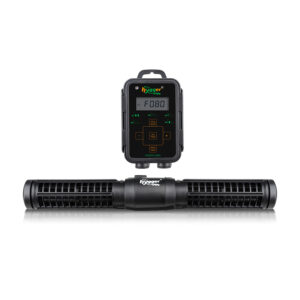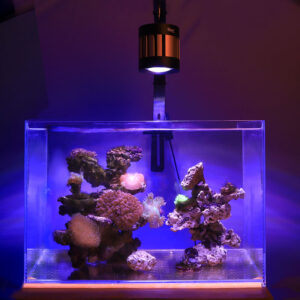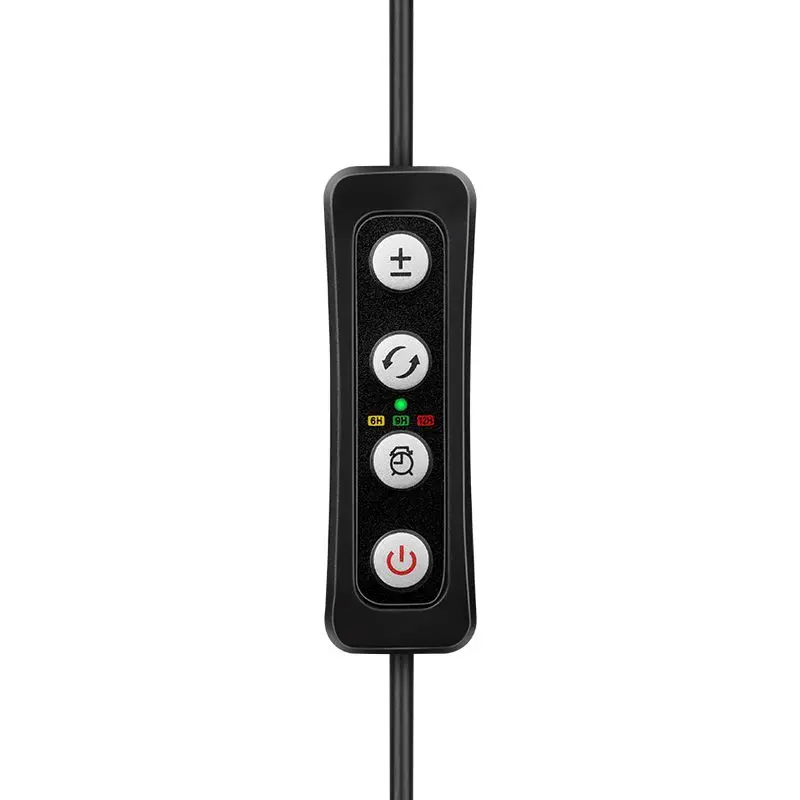Is a Seahorse a Fish or a Mammal
Seahorses are undeniably one of the most captivating creatures in the ocean. With their unique body shape and colorful appearance, they capture the imagination of people of all ages. But beyond their beauty, what do seahorses eat? Seahorses have several fascinating adaptations that allow them to thrive in their environment.
In this blog post, we will explore the world of seahorses, learning about their anatomy, habitat, diet, and unique reproductive habits. How about a seahorse giving birth? Besides, we will also explore some interesting facts about these underwater wonders. So, dive in and join us as we learn more about seahorses!
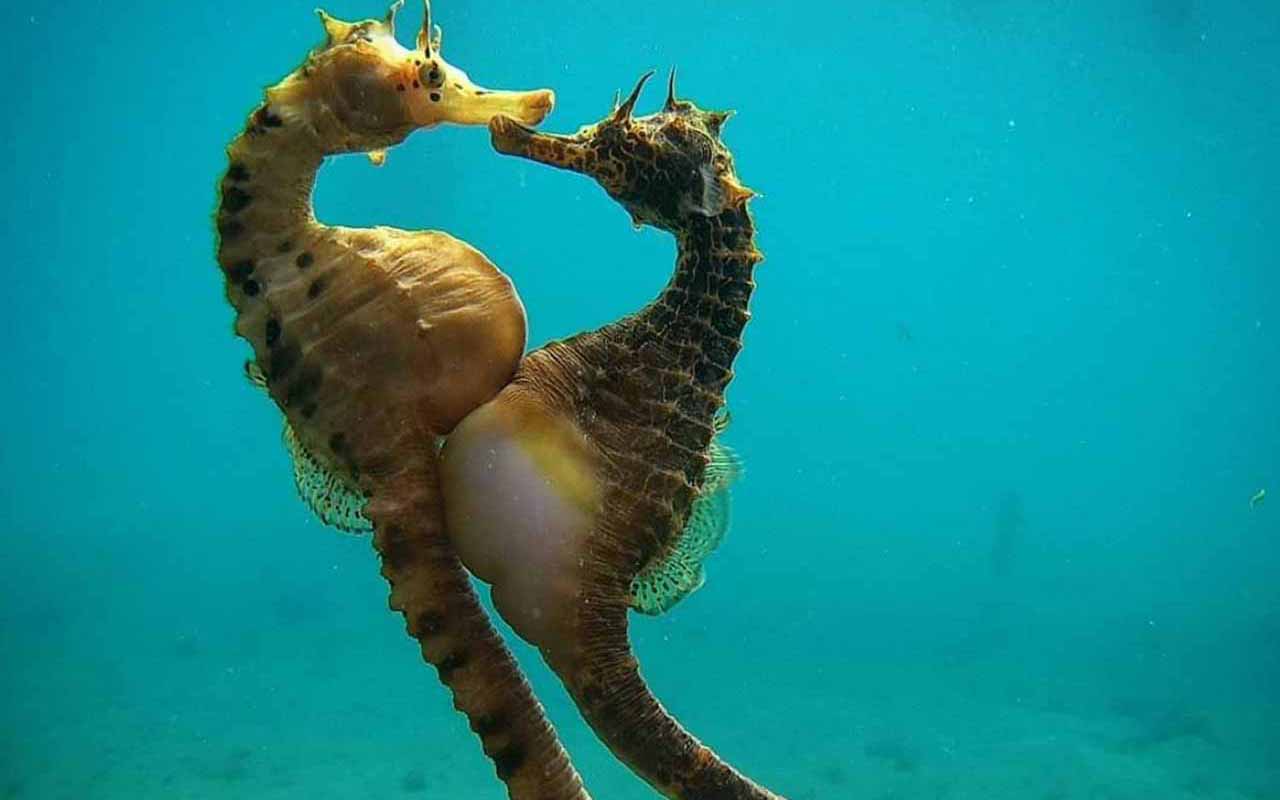
Is a Seahorse a Fish?
The seahorse seemed to be a mammal instead of a fish. Besides its appearance which can be described as unique and a bit strange, the seahorse has many characteristics in common with other bony fish, such as the ability to change colors.
They use gills to breathe and fins for swimming, exactly as all other fishes do. While different from typical fish by the fact they have no scales and a prehensile tail, seahorses are still considered a part of the fish family.
Thus, if you ever see a seahorse while swimming in the ocean, remember that it is indeed a fish, not a mammal.
What Group of Animals Are Seahorses a Part of?
Seahorses are a special type of fish. Even though they are different in appearance and behavior, seahorses are still classified as fish, due to their gills, scales, and fins. They are from the Syngnathidae family, including pipefish and sea dragons. Seahorses are similar to regular fish and play a significant role in the global marine environment.
Colorful Seahorse
Certainly! Seahorses are a diverse group of fish with over 50 known species, each boasting a dazzling array of colors and body shapes that allow them to camouflage themselves in their specific habitats. Let’s explore some of the most colorful seahorse varieties:
1. Yellow Seahorse (Hippocampus kuda)
| The warm yellow color of this seahorse is a common sight in the Indo-Pacific shallow coral reefs and seagrass meadows. They are well suited for concealment, as their coloration resembles the yellow and orange sponges and corals. | 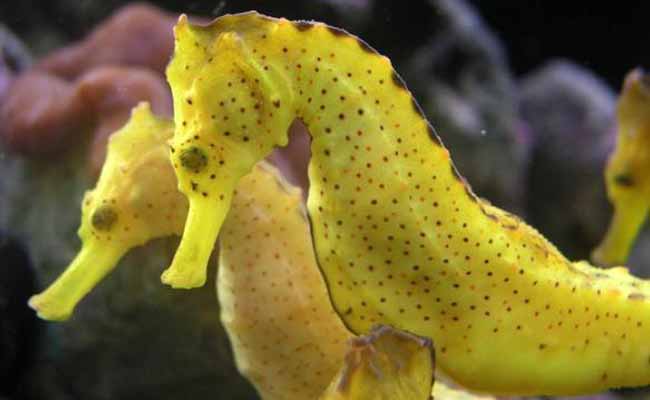 |
2. Humpback Seahorse (Hippocampus erectus)
| Humpback seahorses are found in the mild waters of the Atlantic and Pacific Oceans, showing a variety of colors from yellow and orange to brown and red. For instance, their ridges and hue enable them to camouflage among seaweeds and kelp. | 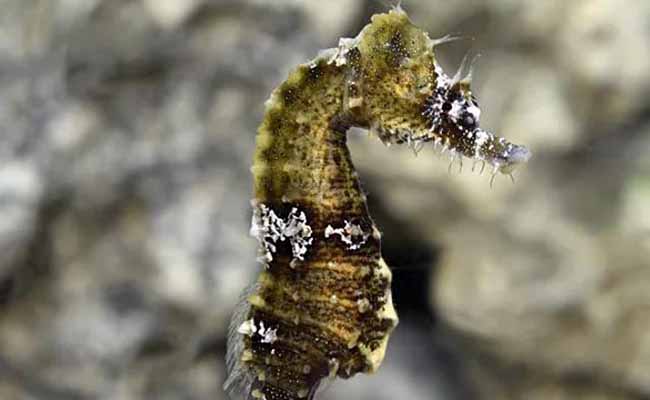 |
3. Red Sea Seahorse (Hippocampus kuda Regina)
| The name itself talks about the striking feature of this seahorse, it is predominantly red with bright yellow and orange accents. They live in the Red Sea and the Gulf of Aden and habitually hang on Gorgonian Sea fans. | 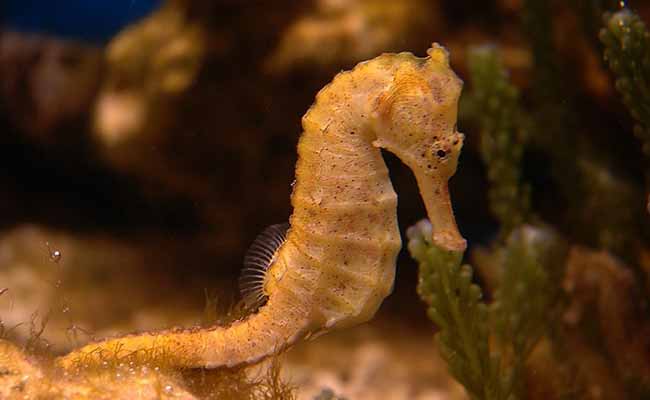 |
4. Spiny Seahorse (Hippocampus histrix)
| The name “Sea Needle” perfectly describes this seahorse, which has many body spikes that look like needles. Their coloration would range from yellowing and orange to brown and black, matching the surroundings of algae and coral rubble in the Indo-Pacific area. | 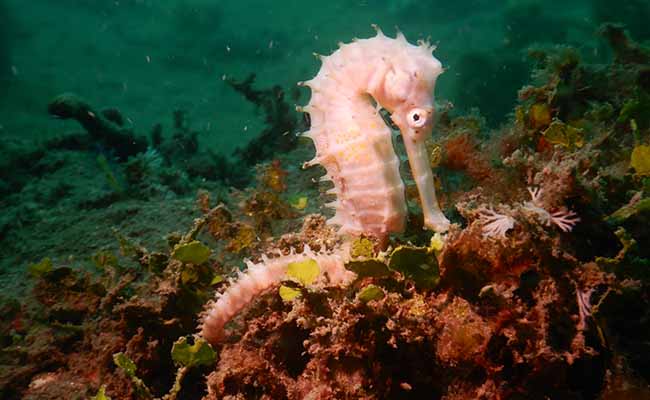 |
5. Tiger Seahorse (Hippocampus comes)
| The tiger seahorse lives in the shallow waters of the Indo-Pacific Region and due to the stripes on its body, it gets its name. These stripes can be yellowish-orange to brown-black, nicely matching with the environment. | 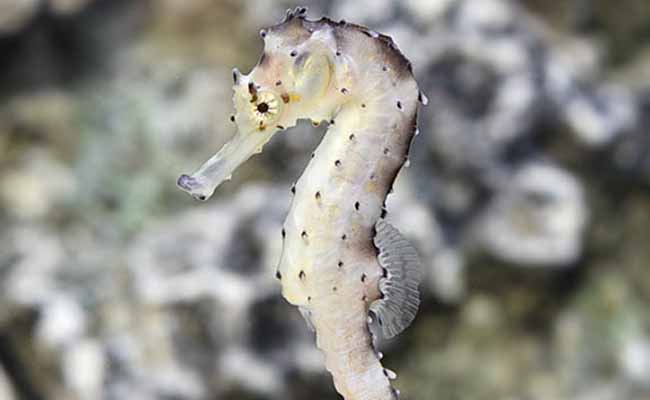 |
6. Weedy Seahorse (Hippocampus zosterae)
| This species, which is commonly found in the temperate waters of the Atlantic & Pacific Oceans, gives a variety of colors such as yellow, green, brown, and black. Their long bodies and thin limbs allow them to disappear into the grass of seagrass meadows. | 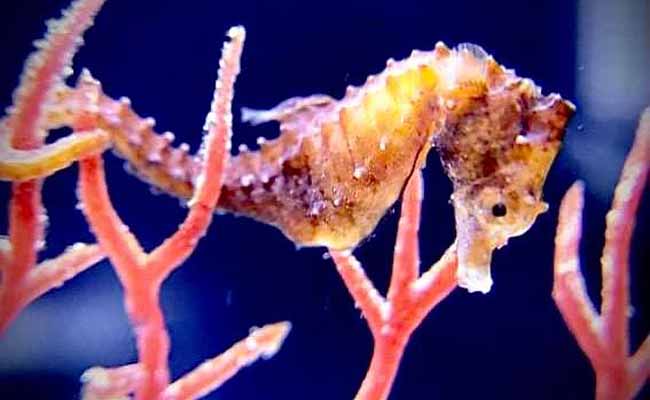 |
7. Short-snouted Seahorse (Hippocampus breviceps)
| The short-snouted seahorse ranges from yellow to orange in the seagrass meadows and mangroves of the Indo-Pacific. In addition, it can be found in brown and black shades too. Their short snouts and stocky bodies are the special features that allow them to be a perfect fit in their surroundings. | 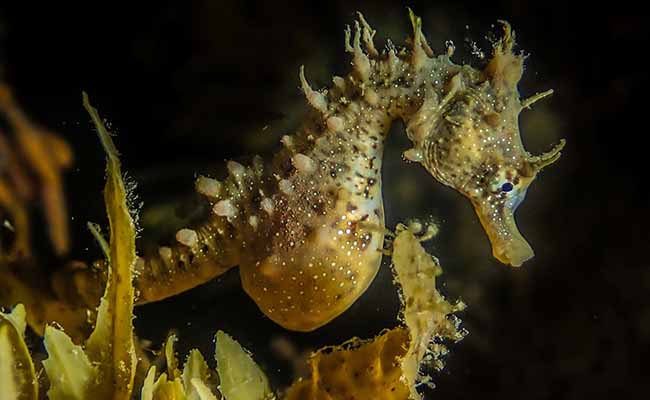 |
8. Giant Seahorse (Hippocampus ingens)
| The giant seahorse, the biggest of all seahorse species, can grow to over 14 inches in size! The kelp forest of the eastern Pacific Ocean is their home and their coloration varies from yellow and orange to brown and black, which enables them to blend with the kelp fronds. | 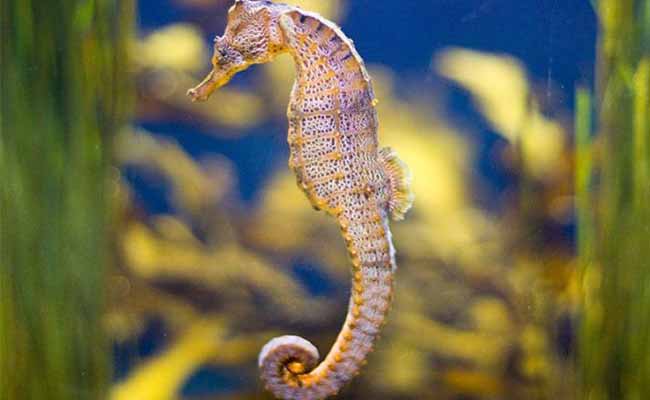 |
What Do Seahorses Eat?
Seahorses are unique creatures that eat mostly small crustaceans. They are omnivorous, and they love eating different species of shrimp, copepods, and other small invertebrates found in water. Seahorse has a long snout, which it uses to suck in food rather than swimming actively. This is because seahorses, a timid creature use camouflage and stealth to catch their food. In captivity, seahorses are generally fed live or frozen mysis shrimp, brine shrimp, and other small marine organisms to ensure they are given the right nutrition.
The Difference Between a Female and Male Seahorse?
Here’s a table highlighting some key differences between male and female seahorses:
| Characteristic | Male Seahorse | Female Seahorse |
| Pregnancy | Carry and give birth to young | Do not carry young |
| Pouch Presence | Have a brood pouch | Do not have a brood pouch |
| Size | Generally smaller | Generally larger |
| Body Shape | Slimmer and more streamlined | Fuller and more rounded |
| Courtship Behavior | More elaborate and active | Less active and elaborate |
| Coloration | Maybe more brightly colored | Maybe more subtly colored |
| Aggressiveness | Less aggressive | More aggressive |
| Lifespan | Shorter lifespan | Longer lifespan |
| Reproductive | Role Produce sperm | Produce eggs |
Do Male Seahorses Give Birth?
Yes, male seahorses are also capable of giving birth. In the seahorse species, it is the male seahorse that becomes a mother and carries the fertilized eggs in a specialized pouch until they are ready to be born. The female seahorse passes her eggs to the male’s pouch, and they are fertilized there, becoming fully developed until they are ready to hatch. This unusual aspect of seahorse breeding is amazing because it is unlike many other species in the animal kingdom.
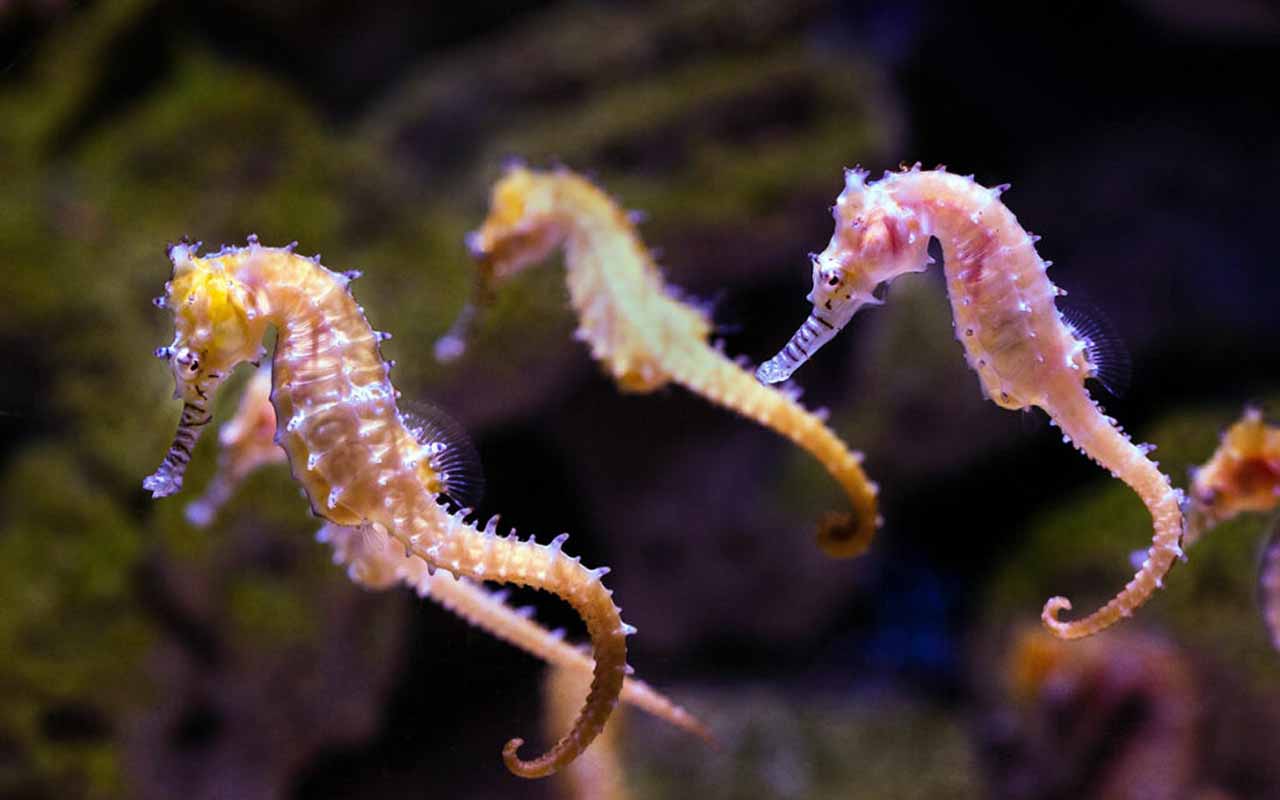
Interesting Facts About Seahorses
- They can quickly transform their color to match their environment, which helps them to become invisible to their enemies and hunt their prey by surprise.
- Seahorses have a bony structure, gills, and swim bladder, all of which make them fishy animals.
- To cut a long story short, it is the male seahorses that carry the developing embryos! The female lays her eggs into a pouch that is on the male’s belly, and they are fertilized inside the pouch and develop there for several weeks.
- Seahorses do not have great swimming ability and use their tails to anchor themselves to seaweed, coral, or any other stationary object.
- They do not have teeth and a stomach, so they have to keep searching for food. Their nose shapes are like mini vacuums that pull in plankton and small shrimp at blazing-fast speeds.
- Seahorses are famous for creating a deep and lasting bond with their mate. Such couples are very likely to stay in a relationship for many years, and the daily “dance” is the way they greet each other.
- Seahorses possess extraordinary eye movements. Each eye can rotate, allowing almost a 360-degree sweep of its environment.

